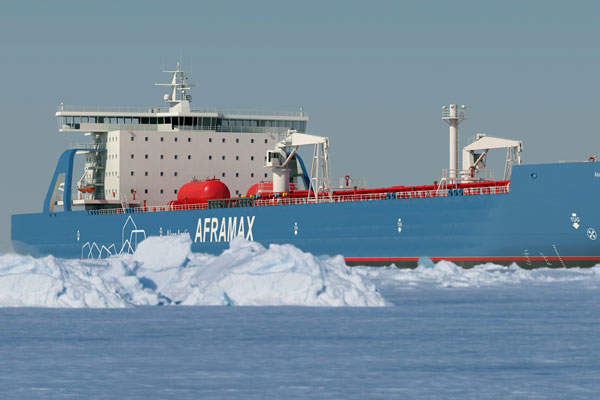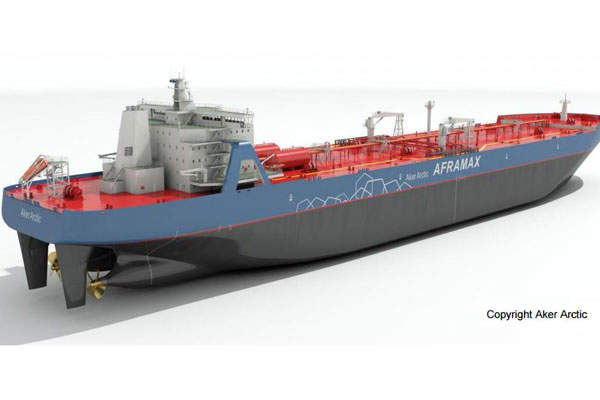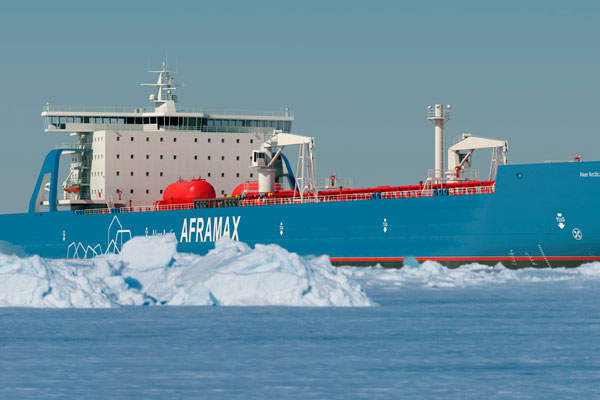
Arctic Aframax Tanker, developed by Deltamarin and Aker Arctic Technology, is a new Aframax-sized tanker concept for operations in the Arctic region. The new design is intended to deliver safe operations in Arctic ice conditions.
Arctic Aframax design and features
The design incorporates optimised icebreaking and open-water capabilities as well as the modern energy-efficiency features implemented in accordance with the Polar Code requirements. The unique combination results in an affordable transport solution by low-cost operation. The design can be further refined according to the customer requirements.
Academician Pashin is a replenishment oil tanker being built for the Russian Navy as part of Project 23130.
The bow and hull forms of the vessel are designed to offer the best proportion between the open-water performance and icebreaking capabilities. The specially developed, strengthened hull will enhance safety in missions in the arctic waters.
The hull will be equipped with an ice load monitoring system (ILMS), which evaluates ice loads from the hull and provides online support to the officers for assuring safe operations. The system will also aid the ship operator in the long term by analysing the data and generating the information for the mission optimisation. All elements of the concept design were planned with special emphasis on the winterisation for cold climates.
The vessel will be strengthened to Polar Class 5 (PC5) ice-class level, which is roughly equivalent to the class ARC6 of the Russian Maritime Register of Shipping (RMRS). It is capable of uninterruptedly breaking ice more than 1m in thickness.
The vessel will have an overall length of 266m, a breadth of 46m, a depth of 22.5m and a design draught of 14.8m. The length between perpendiculars will be 258m. The tanker will have a deadweight tonnage of 118,000t.
Development of the Arctic Aframax Tanker
The new Aframax tanker concept was launched by Deltamarin and Aker Arctic in September 2015. The innovative design is the outcome of a co-operation, which combines the superior technical capabilities of both companies.
Deltamarin’s expertise in designing cost-effective product tankers will be used to reduce the shipbuilding and operating costs of the purpose-built Aframax tanker.
The arctic tanker is designed for the transportation of crude oil and oil products. It can sail on the Northern Sea Route during the extended summer months. It can also sail in other subarctic regions, including the Baltic Sea and Sakhalin.
The ice-strengthened vessel, with state-of-the-art features, will offer cost-efficient and reliable tanker operations both in open waters and ice.
Command and control
The vessel will integrate an improved command bridge, the Aker Arctic ARC Bridge Concept. The ergonomically designed bridge will offer better visibility in all directions. Access and passages will be provided to command posts.
Propulsion
The vessel will be powered by slow-speed diesel engines driving two controllable pitch (CP) propellers through direct shaft lines. The power plant will ensure high availability of power for all equipment and machinery aboard the ship.
The vessel can also be equipped with dual fuel engines to run on liquefied natural gas (LNG) fuel. It can be further outfitted with two bow thrusters and shaft power take-off / power take-in (PTO/PTI) systems.
The vessel will feature compact machinery space layout and separated engine rooms will be integrated with in-built safety features. The propulsion system will allow the vessel to sail at an economical open water speed of 13.5k.










